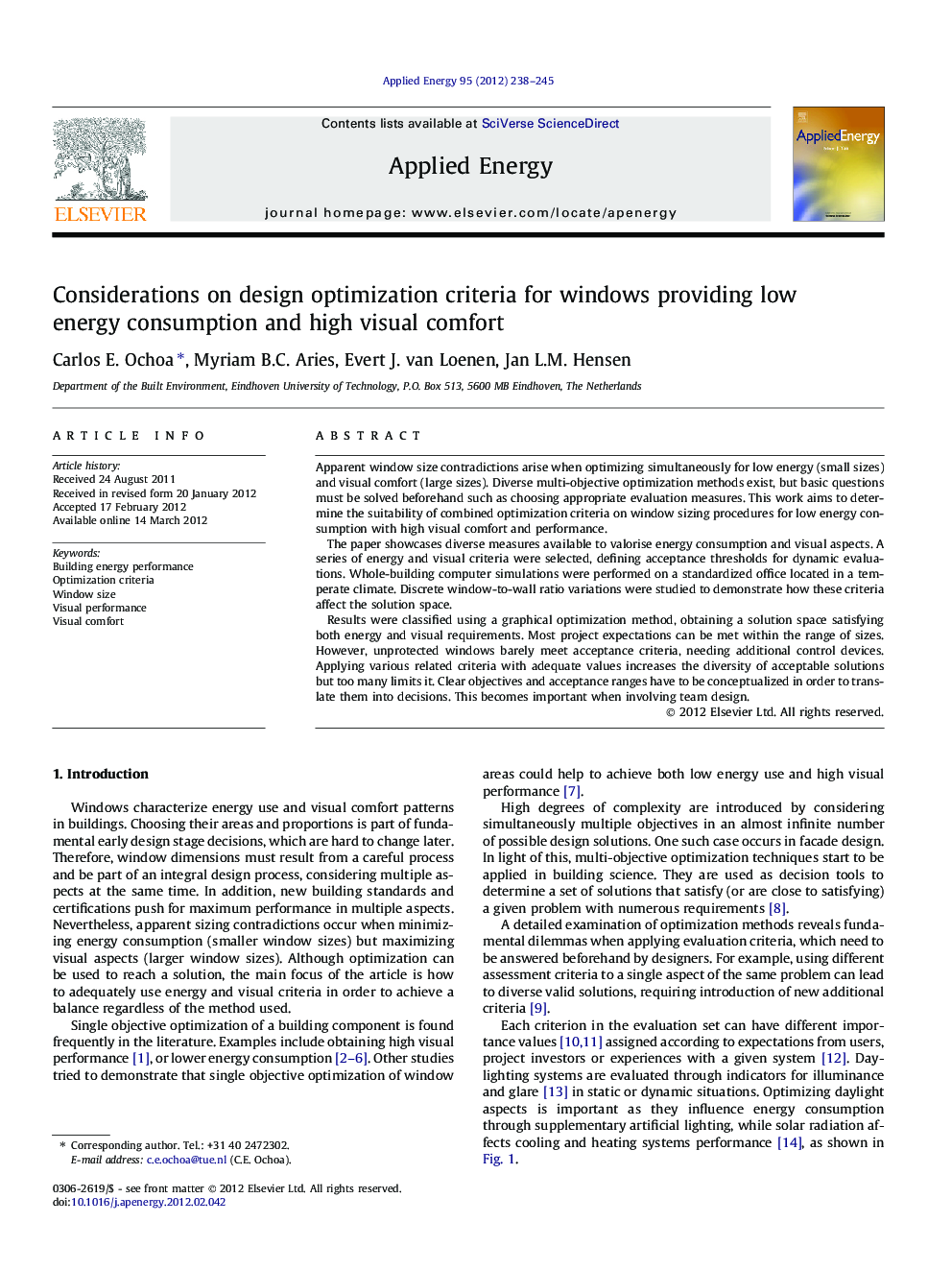| Article ID | Journal | Published Year | Pages | File Type |
|---|---|---|---|---|
| 243694 | Applied Energy | 2012 | 8 Pages |
Apparent window size contradictions arise when optimizing simultaneously for low energy (small sizes) and visual comfort (large sizes). Diverse multi-objective optimization methods exist, but basic questions must be solved beforehand such as choosing appropriate evaluation measures. This work aims to determine the suitability of combined optimization criteria on window sizing procedures for low energy consumption with high visual comfort and performance.The paper showcases diverse measures available to valorise energy consumption and visual aspects. A series of energy and visual criteria were selected, defining acceptance thresholds for dynamic evaluations. Whole-building computer simulations were performed on a standardized office located in a temperate climate. Discrete window-to-wall ratio variations were studied to demonstrate how these criteria affect the solution space.Results were classified using a graphical optimization method, obtaining a solution space satisfying both energy and visual requirements. Most project expectations can be met within the range of sizes. However, unprotected windows barely meet acceptance criteria, needing additional control devices. Applying various related criteria with adequate values increases the diversity of acceptable solutions but too many limits it. Clear objectives and acceptance ranges have to be conceptualized in order to translate them into decisions. This becomes important when involving team design.
► Presents a case when multiple objectives must be met in facade design. ► Guidance to select optimization criteria for balanced energy use-visual comfort. ► Demonstrated through whole-building simulation. ► Brief review of illuminance- and glare-based visual comfort criteria.
